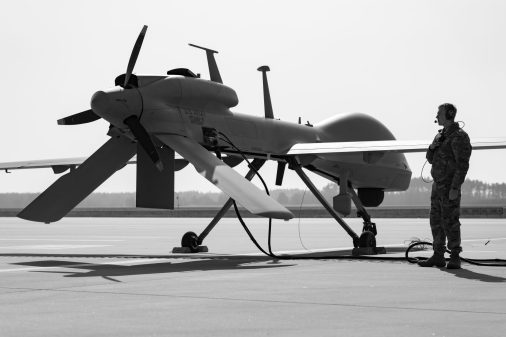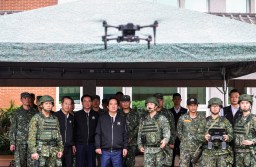Lawmakers plan to press DOD to accelerate fielding of AI-enabled counter-drone capabilities

Members of Congress are concerned that the Pentagon isn’t moving fast enough to scale artificial intelligence technologies to counter adversaries’ unmanned aerial systems, and lawmakers want senior officials to explain how they plan to address the problem.
Drone attacks have played a prominent role during the Ukraine-Russia war and the ongoing conflicts in the Red Sea and the Middle East. U.S. legislators have taken notice.
Earlier this week, the House Armed Services Subcommittee on Tactical Air and Land Forces released its mark for the fiscal 2025 Servicemember Quality of Life Improvement and National Defense Authorization Act.
“Unmanned Aerial Systems (UAS) continue to evolve rapidly and present growing threats to the United States and allied personnel and infrastructure. Although many adversarial UAS are inexpensive and easy to replace, U.S. forces often respond with defensive capabilities that are much more expensive, limited in quantity, and slow to replace. Moreover, many legacy systems struggle to effectively counter larger UAS. The committee believes the most effective counter-UAS capabilities for the joint force are those using software-defined technologies of autonomy, artificial intelligence (AI), and machine learning to outpace the current and evolving UAS threats,” the text of the legislation states.
Industry has been developing new tools, including cutting-edge software and weapon systems, that could boost the department’s arsenal of defensive weapons.
Lawmakers praised Central Command, which oversees U.S. military operations in the Middle East, and Special Operations Command for using open-architecture systems and “AI-driven autonomous air vehicles” to take out so-called Group 3 drones — a category of UAS that includes loitering munitions, also known as kamikaze drones or one-way attack drones.
However, legislators dinged the Pentagon for not moving faster to ramp-up production and fielding of innovative technologies to get after these types of air defense problems.
Members of the House Armed Services Committee are “concerned that the military services have not budgeted to sustain and expand these types of critical capabilities in fiscal year 2025 or in the Future Years Defense Program. For example, the Army has failed to transition these capabilities at scale, and the Navy and Air Force lack clear program office direction to begin such transition,” according to the text from the Subcommittee on Tactical Air and Land Forces’ mark for the annual policy bill.
The legislation would direct the secretary of the Army, in coordination with the leaders of the Navy and Air Force, to brief the HASC by mid-December “on plans to resource, transition, and scale advanced, AI-enabled, combat-validated UAS defeat capabilities to conventional forces within the department.”
The provision reflects broader concerns on the Hill about the U.S. military’s posture for defeating unmanned aerial systems.
For example, the mark from the Subcommittee on Tactical Air and Land Forces would also mandate the secretary of defense secretary to name an “executive agent” who would provide oversight of the Pentagon’s training and technology programs to thwart small UAS.






